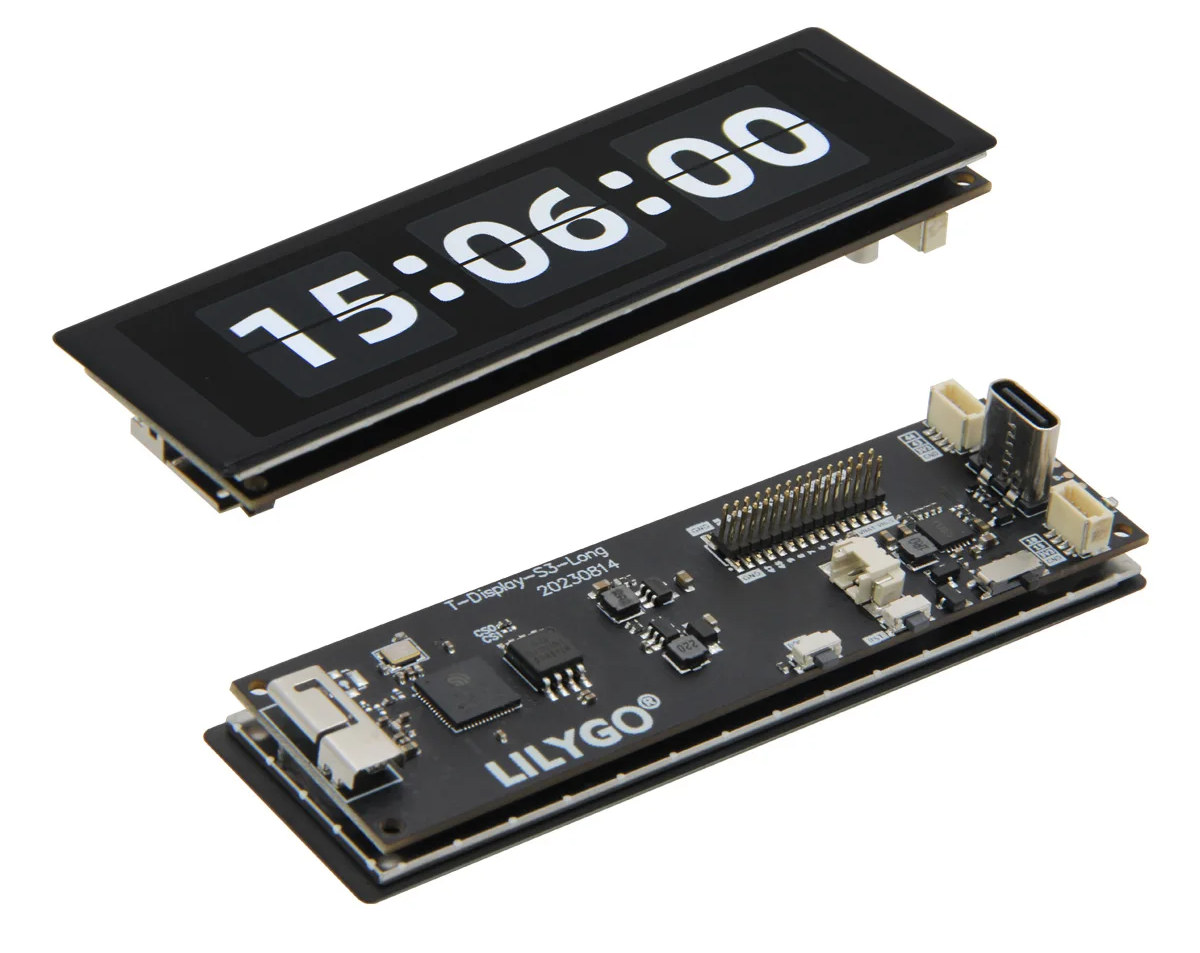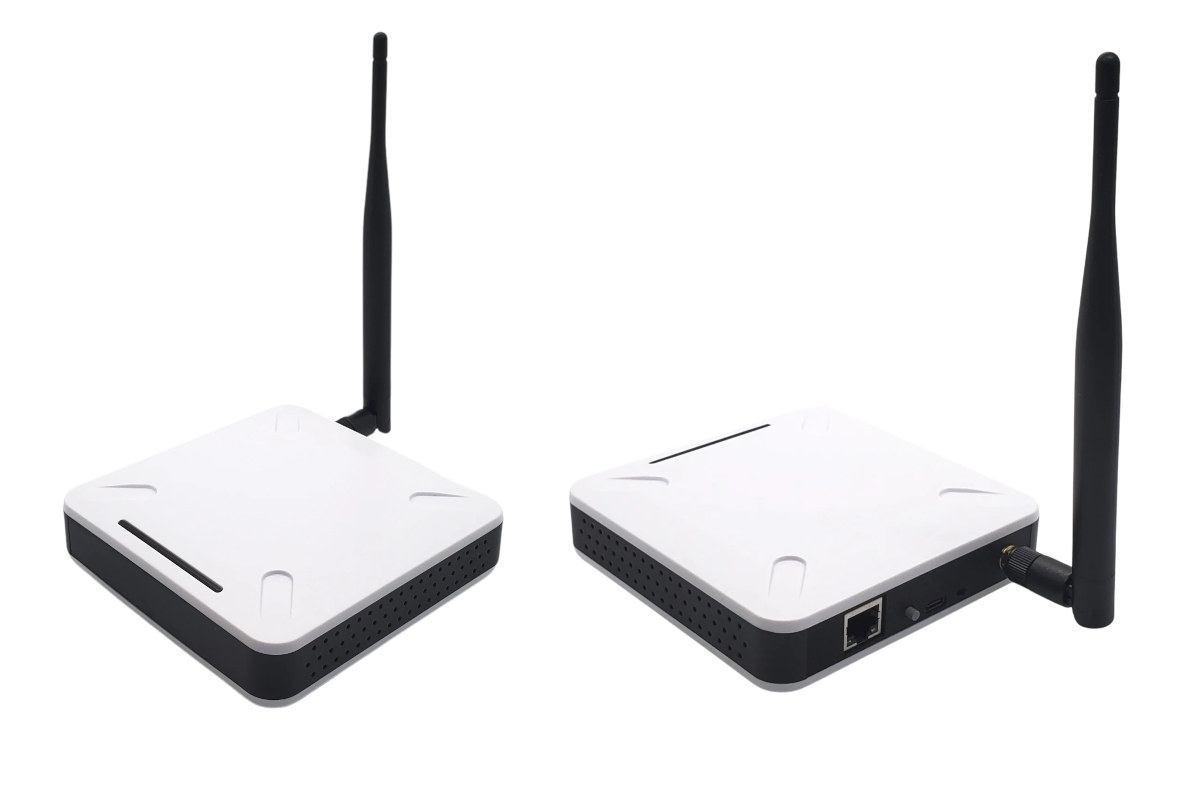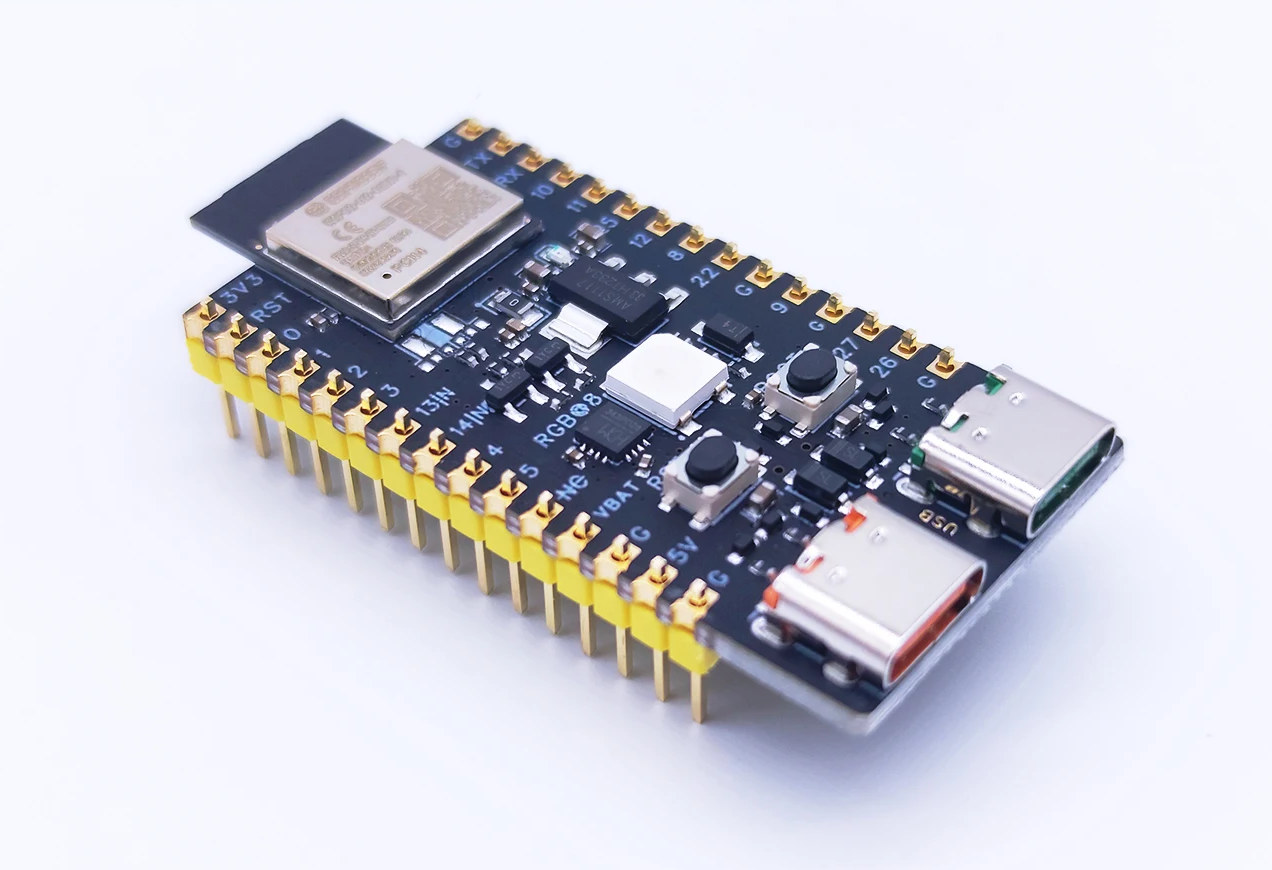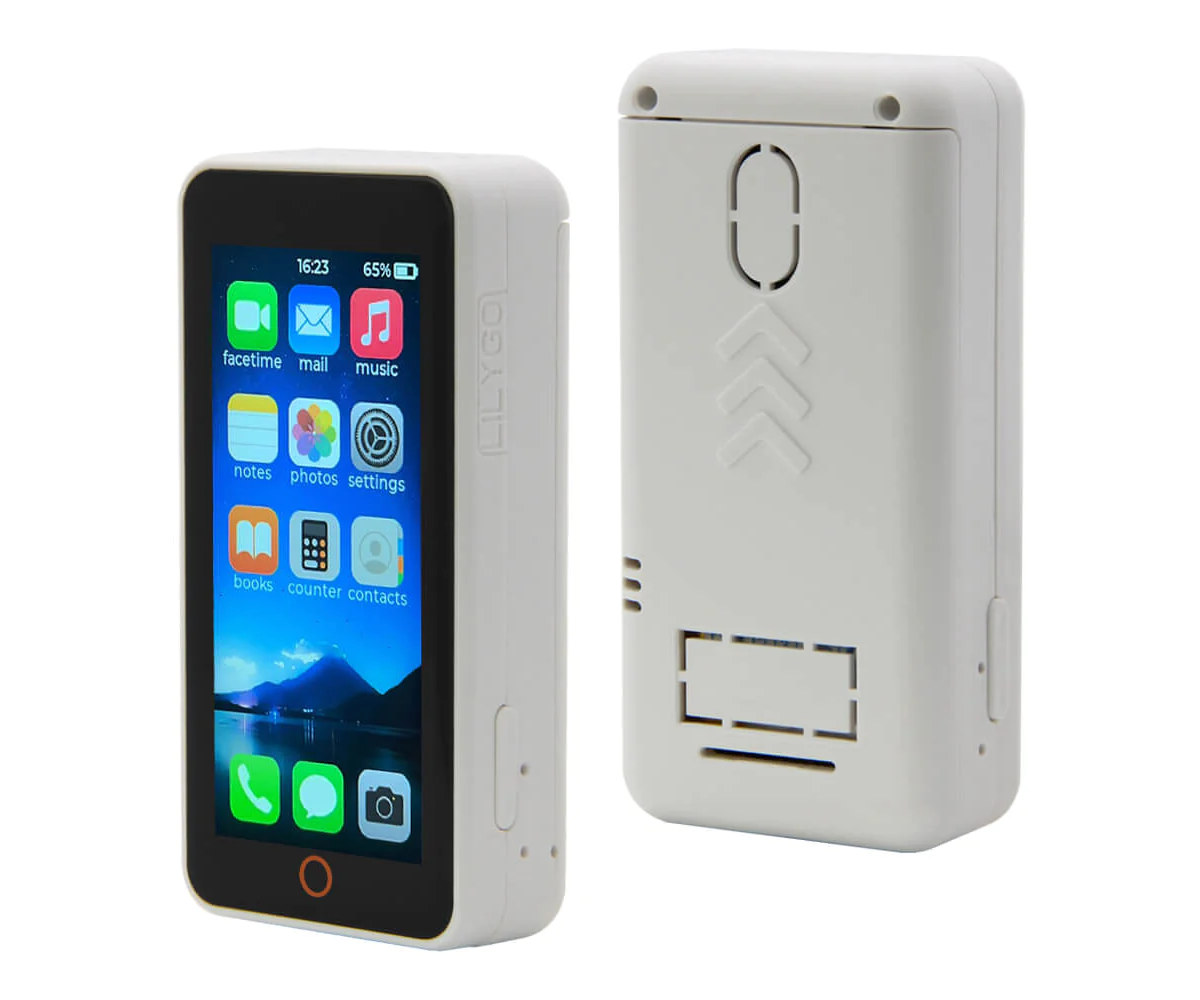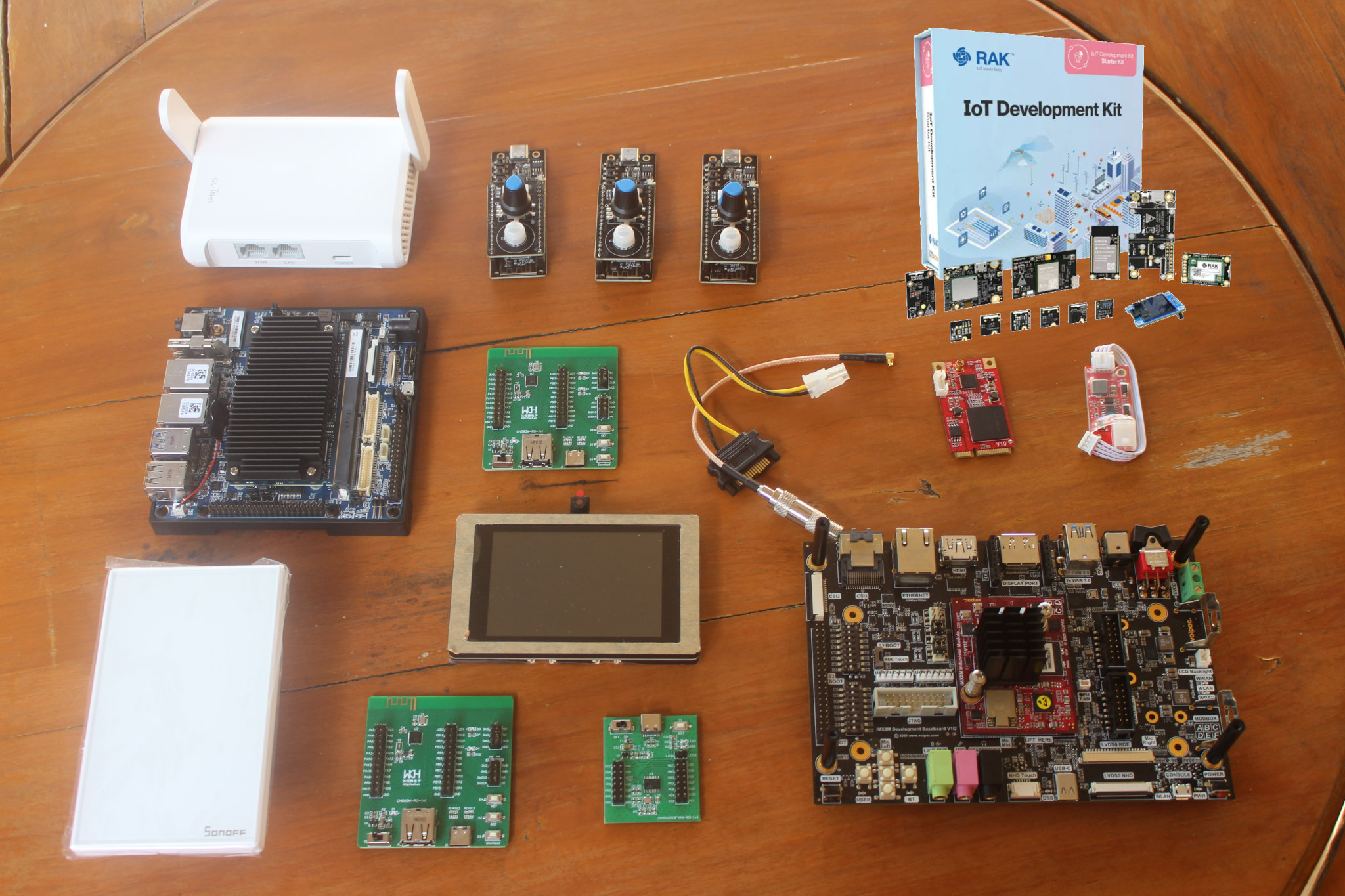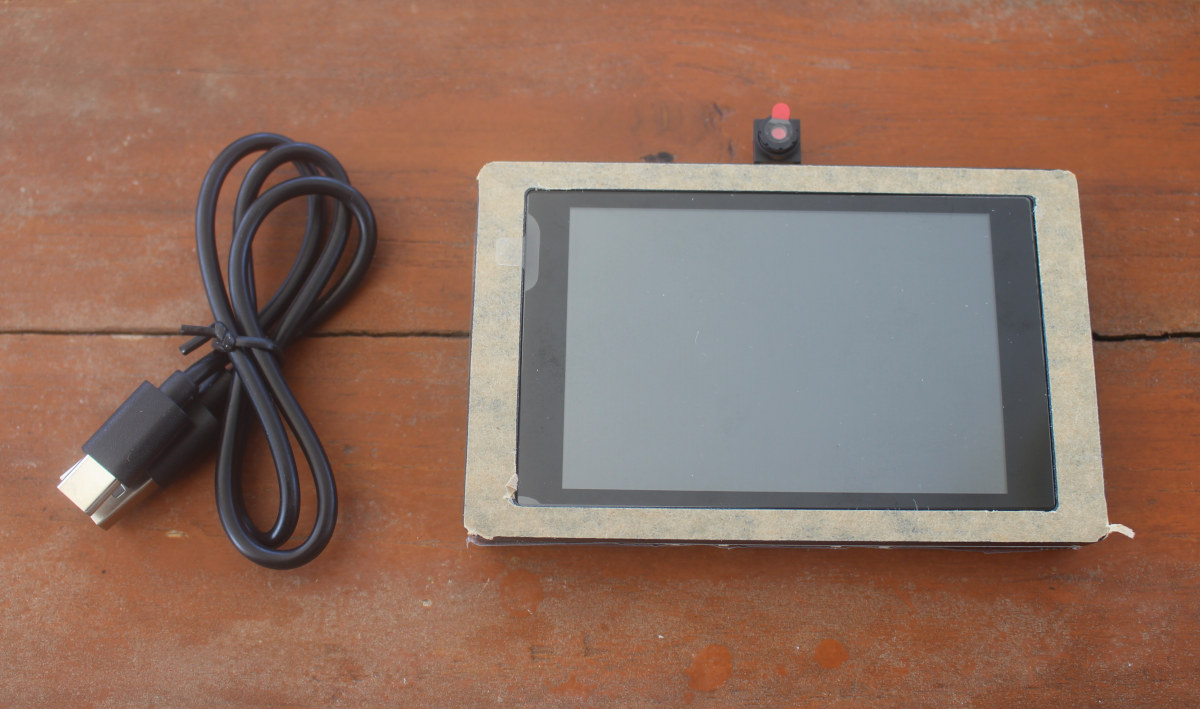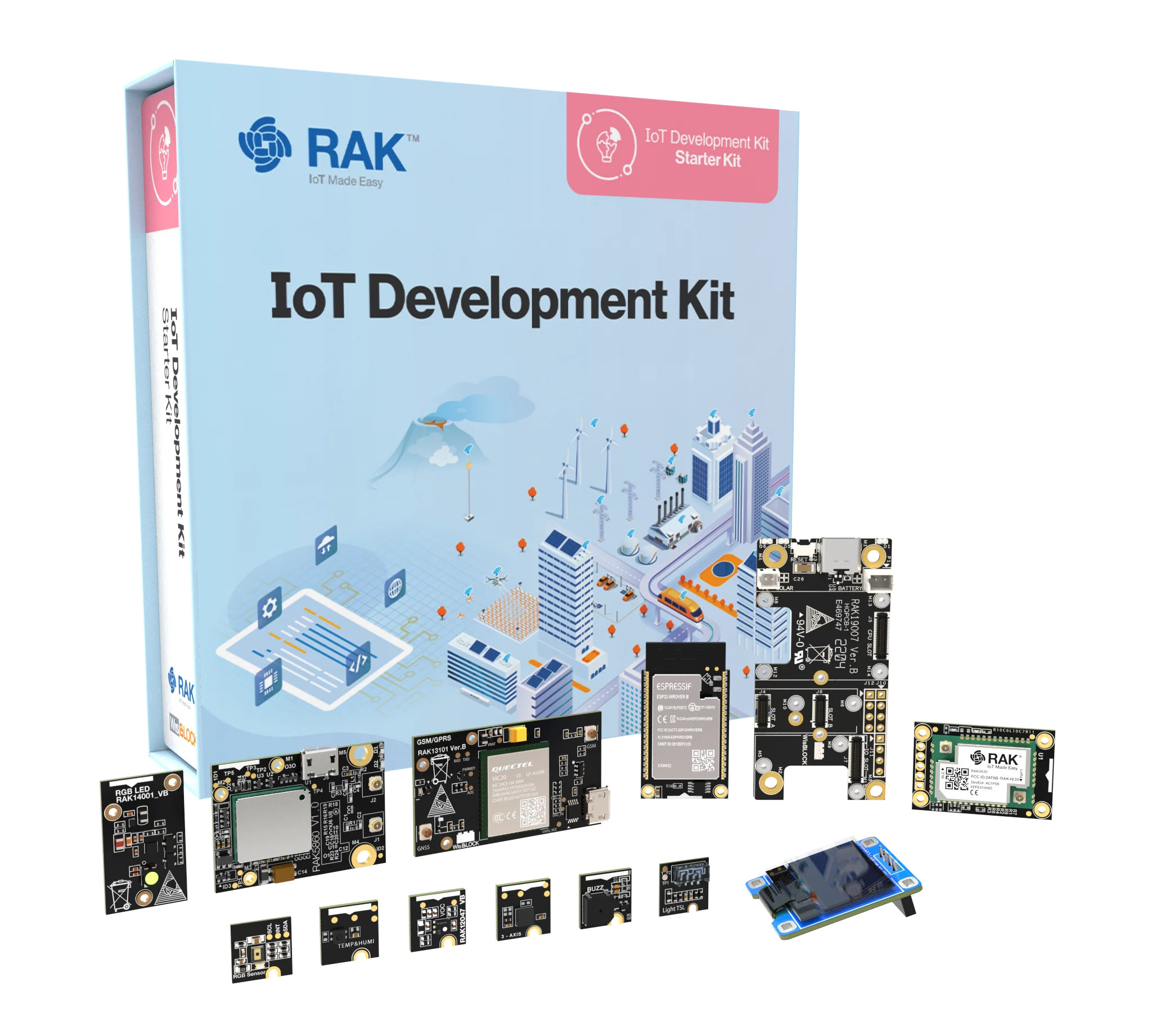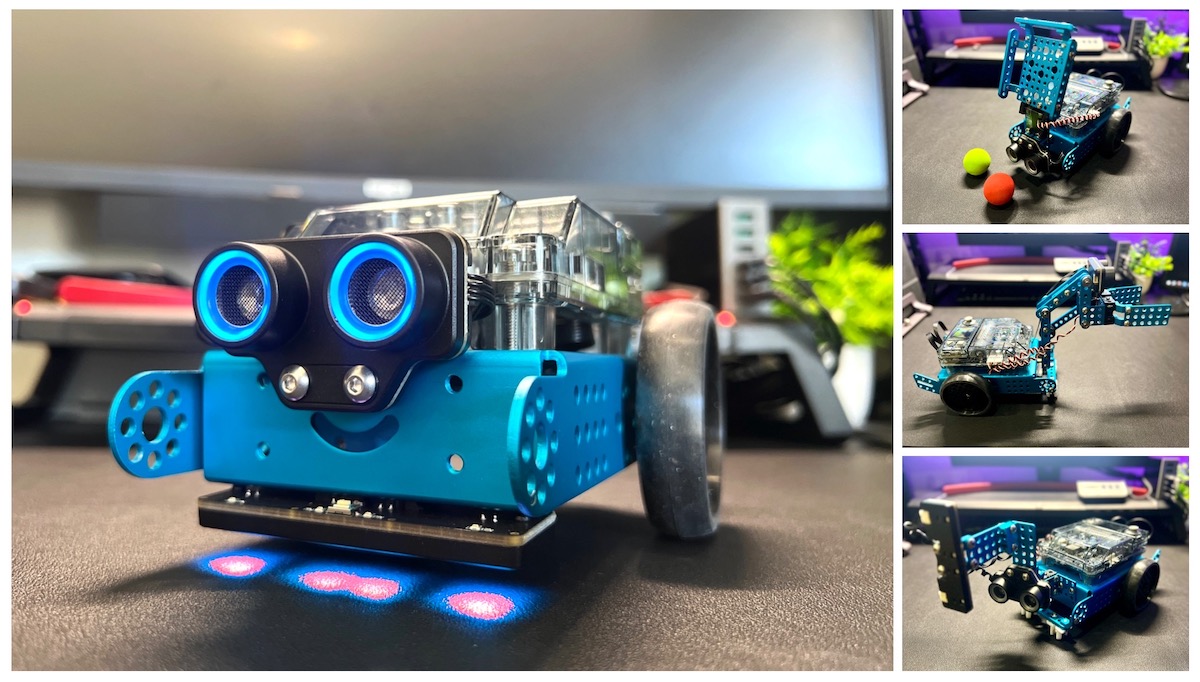LILYGO has designed plenty of ESP32 boards with an integrated display, but the new T-Display-S3-Long may be suitable for different applications since the ESP32-S3 board comes with a wide 3.4-inch touchscreen display with 640×180 resolution. The WiFi and Bluetooth wireless display board is powered by an ESP32-S3R8 WiSoC with 8MB PSRAM, and comes with a 16MB SPI flash, two Qwiic connectors and a 30-pin header for expansion, a USB Type-C port for power, charging, and programming, and a 2-pin connector for an optional LiPo battery. T-Display-S3-Long specifications: Wireless MCU – Espressif Systems ESP32-S3R8 dual-core Tensilica LX7 @ up to 240 MHz with vector instructions for AI acceleration, 512KB RAM, 8MB PSRAM, wireless connectivity Storage – 16MB flash (W25Q128) Connectivity via ESP32-S3 2.4 GHz 802.11 b/g/n Wi-Fi 4 with 40 MHz bandwidth support Bluetooth Low Energy (BLE) 5.0 connectivity with long-range support, up to 2Mbps data rate. Bluetooth Mesh 3D antenna […]
Theengs Bridge BLE to MQTT gateway supports Home Assistant, OpenHAB, Jeedom, NodeRed, and more
The Theengs Bridge is a new WiFi & Ethernet BLE to MQTT gateway running the open-source OpenMQTTGateway firmware, compatible with a range of sensors, and supporting Home Assistant, OpenHAB, Jeedom, NodeRed, and other MQTT-compatible systems. It follows the Theengs Plug smart socket introduced at the beginning of the board with many of the same features (minus the socket part…) but adds Ethernet and an external antenna for improved range, and improves modularity with a Grove I2C connector and mounting holes for a LoRa-E5-based Grove module and a prototyping area where you can solder your own circuitry with DIP components. Theengs Bridge specifications: Wireless module MCU – ESP32 microcontroller with WiFi and Bluetooth Storage – 8MB flash PCB antenna and u.FL antenna connector Connectivity 10/100M Ethernet RJ45 port 2.4 GHz WiFi 4 and Bluetooth LE with 6dBi 50Ohm external antenna Optional LoRa module via Grove I2C connector MQTT protocol Expansion – […]
WeAct ESP32H2-N4 – A $6 Bluetooth 5.2 LE, Zigbee 3.0, and Thread development board
WeAct ESP32H2-N4 is a low-cost ESP32-H2 development board with Bluetooth 5.2 LE, Zigbee 3.0, and Thread connectivity with a design very similar to the one of Espressif Systems’ ESP32-H2-DevKitM-1 development board, but sold for just $5.70 plus shipping. The ESP32-H2 wireless microcontroller is basically the little brother of the ESP32-C6 without WiFi and aims at low-power nodes in short-range IoT networks. We have previously seen it in Espressif hardware like the aforementioned ESP32-H2-DevKitM-1 and the ESP Thread Border Router board combining ESP32-H2 & ESP32-S3 wireless chips, but so far not in third-party boards, and WeAct ESP32H2-N4 changes that. WeAct ESP32H2-N4 specifications: Wireless module – ESP32-H2-MINI-1 MCU – Espressif Systems ESP32-H2 32-bit RISC-V microcontroller at up to 96 MHz with 320 KB SRAM, 128 KB ROM, 4 KB LP memory, Bluetooth 5.2 LE/Mesh and 802.15.4 (Zigbee/Thread/Matter) radios. Storage – 4MB flash storage PCB antenna Dimensions – 13.2×16.6×2.4 mm USB – 2x […]
LILYGO T-Display S3 Pro – A 2.33-inch ESP32-S3 color touchscreen display with enclosure
LILYGO T-Display S3 Pro is another ESP32-S3 powered WiFi and Bluetooth display from the company with a 2.33-inch color touchscreen LCD, a plastic enclosure, support for USB-OTG, two QWIIC connectors, and a 470 mAh battery. We’re told the T-Display S3 Pro is an update to the T-Display S3 (and by extension of the T-Display S3 Touch and T-Display S3 AMOLED models) but the display is quite bigger at 2.33-inch and with higher resolution (480×222), it comes with an ABS case with an integrated battery by default, adds support for USB OTG, and also includes a few sensors that are missing from the earlier models. T-Display S3 Pro specifications: Wireless MCU – Espressif Systems ESP32-S3R8 dual-core Tensilica LX7 @ up to 240 MHz with vector instructions for AI acceleration, 512KB RAM, 8MB PSRAM, wireless connectivity Storage – 16MB flash, microSD card slot Connectivity via ESP32-S3 2.4 GHz 802.11 b/g/n Wi-Fi 4 […]
Giveaway Week 2023 winners announced!
CNX Software’s Giveaway Week 2023 is now over and we’re ready to announce the winners. We offered some of the review samples we tested (or not) in the last year, and like the last two years, we were also joined by RAKwireless who offered two IoT development kits. All items given away are shown in the photo below, minus some accessories, and if you count more than seven you’d be right, as some are kits with multiple items like the GL.iNet GL-S200 Thread Border router which comes with three development boards, and more importantly, we also organized Giveaway Week on CNX Software Thailand for the second year running. We had seven winners on CNX Software: VOIPAC iMX8M industrial development kit – Kraingsak, Thailand TBS7901 mini PCIe DVB-S2X/S2 module – Frank, Singapore RAKWireless WisBlock IoT Starter Kit – Andy, Russia GL.iNet GL-S200 Thread Border router kit – Augustin, Argentina WCH CH583M-R0-1v1 […]
Giveaway Week 2023 – Elecrow ESP32 Terminal with a 3.5-inch touchscreen display and OV2640 camera
If I remember correctly, Elecrow sent me an end-of-year gift with a notebook (paper style), a pen, and a 3.5-inch ESP32 terminal. I had completely forgotten about it, and while wondering what I would give for Giveaway Week 2023, and looking around in drawers and on shelves, I found an “ESP32 Terminal” package, and I was like “What the F is that and where is it coming from?”. Long story short, the 6th prize of this year’s giveaway week is Elecrow’s ESP32 Terminal with a 3.5-inch touchscreen display that also comes with a front-facing OV2640 camera and six Crowtail connectors for expansion plus a LiPo battery connector. Elecrow ESP32 terminal specifications: Wireless module – ESP32-S3 2.4 GHz Wi-Fi and Bluetooth 5 (LE) module with 16MB flash and 8MB PSRAM Storage – MicroSD card slot Display – 3.5-inch TFT LCD display with 480×320 resolution (ILI9488 driver), capacitive touchscreen Camera – 2MP […]
Giveaway Week 2023 – WisBlock IoT Starter Kit with LoRaWAN and LTE-M/NB-IoT or GSM connectivity
RAKwireless is joining CNX Software Giveaway Week for the third year running with the company offering a free WisBlock IoT Starter Kit with LoRaWAN and LTE-M/NB-IoT or GSM connectivity following giveaways for the WisBlock Kit 2 LoRa-based GPS Tracker with Solar Panel in 2021 and RAK Developer Kit (Air Quality Kit) in 2022. The WisBlock IoT Starter Kit enables prototyping with LoRaWAN and cellular IoT connectivity plus display modules (OLED and RGB) and plenty of sensors such as accelerometers, light sensors, VOC sensors, temperature and humidity sensors, and more. WisBlock IoT Starter Kit content: 1x RAK4631 WisBlock Core module SoC – Nordic nRF52840 Arm Cortex-M4F microcontroller @ 64 MHz with 1 MB Flash, 256 KB RAM, Bluetooth Low Energy 5.0 protocol stack LoRaWAN – Semtech SX1262 LoRa Transceiver with LoRaWAN 1.0.2 protocol stack (supports Class A & C), global coverage support: RU864, IN865, EU868, US915, AU915, KR920, AS923 1x RAK11200 […]
Makeblock mBot Neo robot review with Smart World Add-on Pack
MakeBlock mBot Neo, also known as mBot2, is an educational robot that builds upon the previous generation mBot1 robot, and the company has sent us a review sample, following our earlier review of the Ultimate 2.0 10-in-1 educational robot kit, along with the Smart World Add-on Pack. The mBot Neo features a new ESP32-based CyberPi control board with WiFi connectivity for IoT and AI support. The robot is also equipped with a 2nd generation Ultrasonic sensor with improved object detection accuracy and status indicator, a built-in 4-ch RGB line sensor that can detect colors, as well as a new drive motor that comes with an encoder for more precise motion control. The mBot Neo robot kit is expandable with metal parts from other Makeblock models, mBuild modules and various electronic modules can be added making it also possible to build custom robots with third-party structural parts. The mBot Neo robot […]


